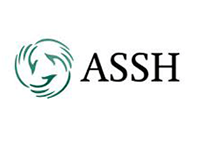Distal Biceps Repair

What is Distal Biceps Repair?
The biceps is a large muscle located in the front of your upper arm and runs from the shoulder to the elbow joint. It is attached to the bones of the shoulder and elbow by tendons. The distal biceps is the area where the biceps is attached to the forearm bone in the elbow.
Distal biceps repair is a surgical procedure to restore a ruptured or torn distal biceps and tendon, caused by an injury.
Indications for the Procedure
The typical indications for distal biceps repair include:
- “Pop” or tear felt in the front of the elbow
- Severe pain around the crease of the elbow
- Bruising and swelling around the front of the elbow
- Weakness in bending of the elbow or twisting the forearm
- Warmth in the elbow and cramping in the arm
- Substantial pain and weakness of the entire upper extremity (shoulder to hand)
Preparation
Your surgeon will explain the procedure, its complications and benefits, and answer any questions you may have.
Additionally, you may be told:
- To avoid certain medicines (if applicable) before the surgery
- To arrange an escort to drive you home after the surgery
- To fast after midnight prior to your surgery
How is the Distal Biceps Repaired?
The distal biceps is usually repaired through a single incision (front of the elbow) or a double incision (front and back of the elbow) technique.
During the procedure:
- You will be administered general anesthesia.
- A small incision is made at the elbow, and the torn or ruptured end of the biceps located.
- Any damaged tissues are removed using specialized instruments.
- Small holes are then drilled into your forearm bone (radius bone).
- A tiny metal implant known as an anchor is pressed into the forearm bone.
- Strong threads (sutures) are inserted into the distal biceps tendon.
- The sutures are attached to the anchor and the biceps is pulled back.
- The biceps is reattached and fixed to the forearm bone with strong anchoring stitches.
- The incision is closed with stitches and a dressing is applied.
- Your elbow is protected with the use of a brace and a sling.
More serious injuries may need a graft (transplanted tissue) to repair the distal biceps.
Complications
Complications are generally rare and temporary. The most common complication is irritation or injury to the sensory nerves of the elbow or the forearm.
Other potential complications are:
- Numbness, tingling or weakness in the forearm
- Pain and/or stiffness in the elbow and arm
- A blood clot caused by anesthesia or surgery
- The need for additional surgery due to:
- Infection or bleeding into the elbow joint
- Re-rupture of the repaired distal biceps and tendon
After-Surgery Care
As you recover, the surgeon will instruct you to:
- Wear an immobilizing device on your elbow or arm for 4 to 6 weeks
- Keep the surgery site dry to decrease the chance of infection
- Protect the repair by restricting your activities for at least 3 months
- Avoid heavy lifting and vigorous activity for several months
Benefits
Distal biceps repair can help you to:
- Regain strength and a full range of motion
- Restore normal function of the elbow
- Return to normal activities








